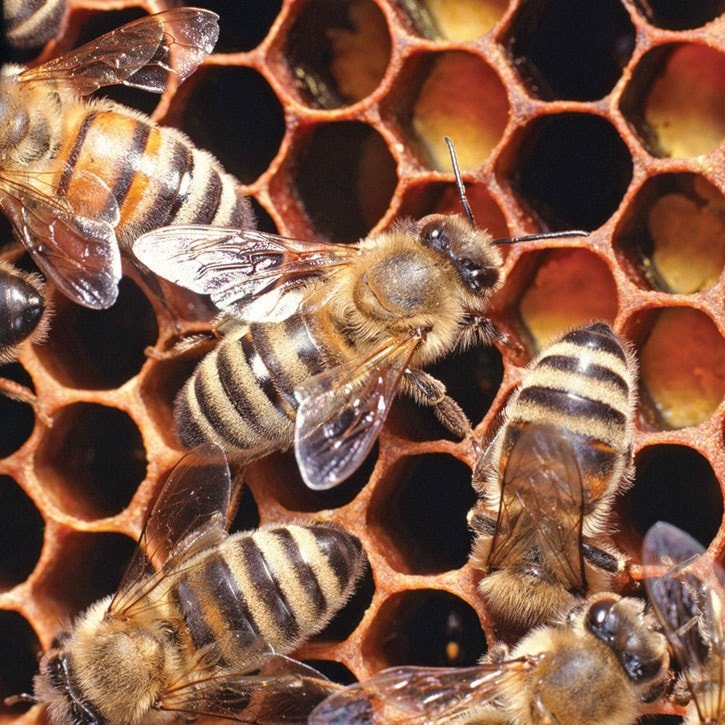It should be the end of a sweet season for local beekeepers, but instead a disease sweeping the southern tip of Vancouver Island threatens their hives and all the bees in them. Members of the Capital Region Beekeepers Association are guardedly checking their hives for signs of a disease called American Foul Brood, a bacteria that does not affect humans but can cause rapid death and ultimately a collapse of the hive and all its resident bees.
American Foul Brood (AFB) is present throughout North America and parallels its European cousin found, as expected, in Europe. After two hives located in south Oak Bay were tested and confirmed by the Provincial Lab to be infected by AFB, they were sealed and buried under special permit at Hartland landfill.
For beekeepers, there are only two choices when the disease is found at this time of year: burn the hive and all its contents, or seal it in plastic and bury it. The beekeeper then has to start over again with a new hive and bees in spring.
The first sign of the disease was in Oak Bay and within days more hives near Deep Cove in North Saanich were discovered. In both cases, inexperienced beekeepers did not recognize the signs of disease until the hives were dead. It was left to CRBA club members and the Provincial Bee Inspector to confirm the diagnosis: AFB.
What the average person may not know is that honeybees can fly up to five kilometers from the hive in search of nectar and pollen. If they discover a hive that has collapsed from disease, they will rob the hive of the remaining honey and carry the food and disease back to their own hive.
Said Catherine Culley, CRBA president, “If beekeepers find a dead hive, or indeed have an old dead hive on their property, they need to close it up immediately to keep bees out.”
CRBA members can help with collecting samples of the diseased honey cells and the club has a special permit ensuring Hartland staff buries the infected hive equipment deep underground. Carolyn Hissen has taken on the issue for the club. Her task has been hampered by beekeepers who quietly go about their business unknown to club members or even their immediate neighbours. “What we don’t know is where all the hives are and we don’t have a way of contacting everyone”, said Hissen.
With many unknown apiaries near the sources of disease, tracking and eradicating these outbreaks will take the collective effort of all local beekeepers.
They each need to do a thorough late season check of their hives. If a beekeeper is unsure they can call the CRBA or send an e-mail to the club (beehealth@capitalregionbeekeepers.ca) to arrange for assistance.
The CRBA will make sure the brood disease is reported to the Ministry of Agriculture and collected samples may also be sent to the Ministry for testing (BCMA – Apiculture, 1767 Angus Campbell Road, Abbotsford, BC V3G 2M3). At this time there is not a bee inspector designated for the Island, so beekeepers can contact Paul van Westendorp, the provincial apiculturist (Paul.vanWestendorp@gov.bc.ca) and he will arrange any necessary inspections.

Bill Fosdick is a member of the Capital Region Beekeepers Association.
